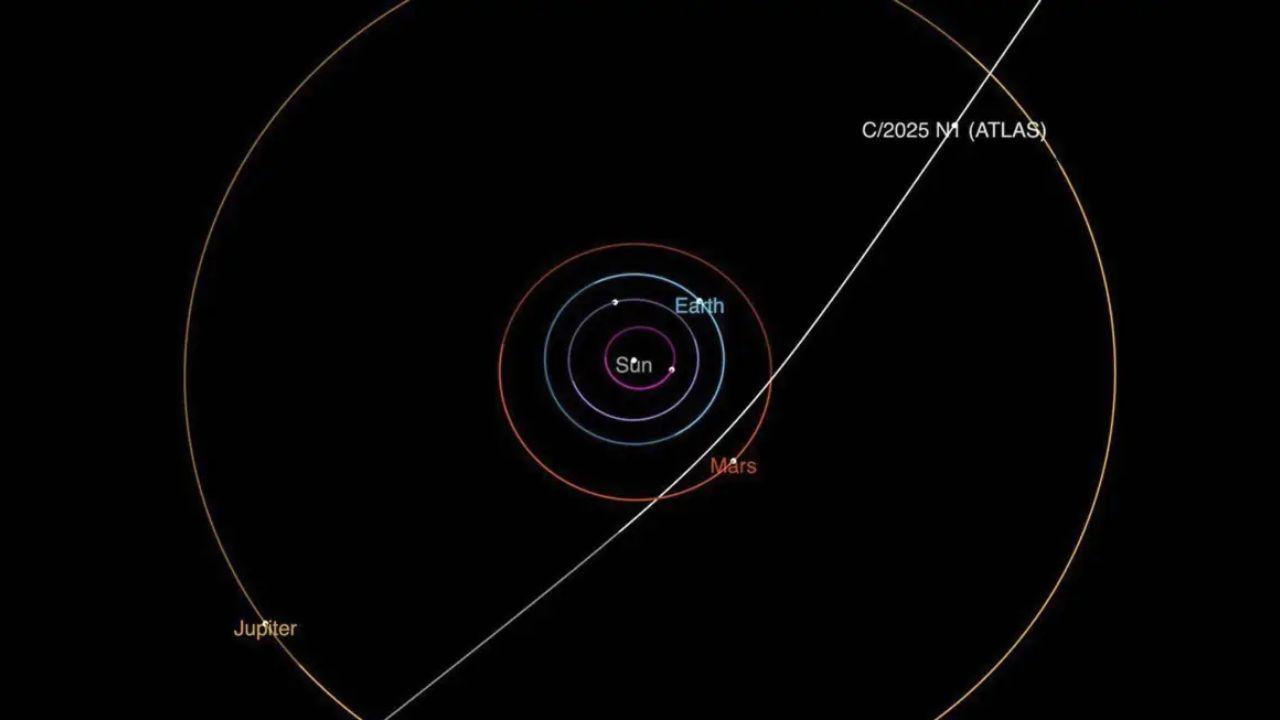
Post by : Mariam Al-Faris
Photo: AP
NASA has discovered a rare comet that has traveled all the way from another star system into our solar system. Scientists spotted this fast-moving object using the ATLAS telescope in Chile earlier this week. NASA later confirmed that it is indeed an interstellar comet—meaning it came from outside our solar system.
This is only the third time in history that such an object has been found passing through our cosmic neighborhood. The good news is, it poses no danger to Earth.
According to Paul Chodas, the director of NASA’s Center for Near-Earth Object Studies, this space traveler has likely been journeying through the galaxy for hundreds of millions or even billions of years. “We don’t know exactly which star it came from, and we can’t predict it,” he said. That’s because it’s extremely difficult to trace the exact origin of such ancient, fast-moving objects.
The newly discovered comet is currently located about 416 million miles (670 million kilometers) from the sun, near Jupiter. It’s traveling at a very high speed—37 miles (59 kilometers) per second—and heading in our direction. But even at its closest point in late October, it will still be at a safe distance of 150 million miles (240 million kilometers) from Earth. It will pass between the orbits of Mars and Earth, but much closer to Mars.
The comet has been officially named 3I/Atlas. The “3I” means it is the third known interstellar object (after Oumuamua and 2I/Borisov), and “Atlas” refers to the telescope that discovered it. Astronomers from around the world are closely studying it to learn more about its size, shape, and behavior. Early reports suggest it has a visible tail and a cloud of gas and dust, which are common signs of a comet.
So far, more than 100 observations have been recorded since its discovery on July 1. Scientists believe 3I/Atlas is larger than the first two interstellar objects, possibly measuring several miles wide. It is also coming from a different direction and is moving faster than its predecessors. Although its origin star remains a mystery, researchers think it may have come from somewhere closer to the center of our Milky Way galaxy.
The first interstellar object we ever saw was Oumuamua, discovered in 2017 by a Hawaiian telescope. Its name means "scout" in Hawaiian. At first, it was thought to be an asteroid, but later, scientists found signs that it could be a comet. The second was 2I/Borisov, discovered in 2019 by an amateur astronomer from Crimea. It was confirmed to be a comet.
“We’ve been waiting for decades to find objects like these,” Chodas said. “And now, finally, we’re seeing them. It’s natural, not alien or artificial, but still very exciting to witness.”
If you have a telescope, you might be able to see 3I/Atlas through September. It will get harder to spot as it nears the sun, but scientists say it may become visible again in December after passing behind it.










Globe Soccer Awards 2025 Finalists Include PSG and Cristiano Ronaldo
GLOBE SOCCER Awards 2025 finalists are out after 30 million fan votes, with PSG stars, top clubs and

Google Gemini Web App Adds Opal Tool for Building Mini AI Apps
Google adds Opal to Gemini web app, letting users make mini apps called Gems using simple prompts wi

Shraddha Kapoor Praises Crew Behind Dhurandhar Film Success
Shraddha Kapoor praises the unseen technicians of Dhurandhar, lauds director Aditya Dhar, and calls

Truecaller Launches Free AI Voicemail with Spam Protection for Android
Truecaller launches free AI voicemail for Android in India with instant transcription, spam protecti

FIFA Confirms First Women’s Club World Cup Scheduled for 2028
FIFA announces the first Women’s Club World Cup in January 2028 with 16 teams, group stages, and glo

Buck Rogers Star Gil Gerard Dies at 82 After Cancer Battle
Gil Gerard, famous for playing Buck Rogers, has died at 82 after cancer. He was known for his sci-fi